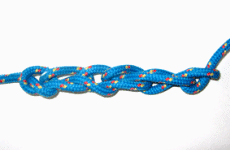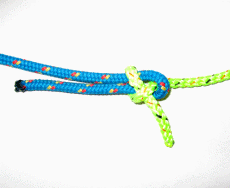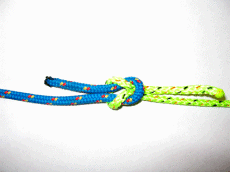First you need sailing technique and ability, the right equipment, crew, rig tune, sails, boat preparation, rules knowledge, sail trim, knowledge of your competitors and, very important, your commitment. These very important skills/techniques/equipment are part of your pre-race preparation and are practiced and learned before the race starts.
The second and equally important quality you need is found on the racecourse-the street fighting part of the game, the tactical brain and the quick thinking needed to get you ahead of your competitors. This quality makes the difference between a good performance and a winning one.
For example, if two equally talented and skilled sailors with equal equipment and preparation sail in the same race, the one which is able to make better decisions on the fly and interpret situations quickly and accurately as they develop will be the winner. This decision making ability will also develop confidence.
So how can we find this decision-making ability? How can we develop this quality? How can we find a system that we can use as a road map, to guide us through the decision-making process and to handle each situation as they develop on the racecourse? We have researched and worked on the pre-race stuff, we have great boat handling and a fast boat. Now we have to go into battle.
One way to approach this is to form a set of underlying PRINCIPLES that will guide you through each and every race. THE DEFINITION of PRINCIPLE: a fundamental truth, law or behavior, a rule code of behavior, moral or ethical standards, an underlying or established rule or policy. As in LIFE itself, a set of PRINCIPLES that you fully believe in will help you get through any situation. Without such PRINCIPLES, you have to think out every situation. This takes time and adds stress. By having a set of PRINCIPLES (morals), you have a guideline.
All top sailors have their set of principles, whether they know it or not. In critical situations, they don’t panic because they have this decision-making process, developed over the years.
Let’s start by listing some principles. These are the ones that I have made, not in any particular order, just randomly written down. You don’t have to have the same ones, you may not even agree with mine. This is the beauty of sailboat racing. It is an art form and each individual can approach the sport in his or her own way. These principles will work for most one-design
PRINCIPLES
Sail on the tack or gybe that points closer to the next mark. This is sailing the shortest course. If you get a header but are still on the tack closest to the mark, you probably will wait for a bigger header before considering a tack.
Go fast, don’t let outside distractions interfere with your boat speed. In shifty conditions, it’s easy to have your head out of the boat and go slow. Shift gears as conditions change; constant adjustment for the condition is required.
Sail fair, don’t break the rules. Like the Master Paul Elvstrom says, “If in winning you haven’t gained the respect of your competitors, you haven’t won at all.”
Sail in clean air. If you have to sail in bad air for tactical reasons, learn how to do it with least impact. Twist is fast in disturbed air.
Stay out of trouble with competitors. Focus on getting around the course the fastest; don’t focus on a single competitor or get tangled up in a protest.
Sail toward and in the most wind pressure. This is probably the biggest in my book.
Sailing in more pressure means you point higher upwind and lower downwind and go faster. Before the start (and during the race), look upwind and see where there is the most wind. Bands of wind run between packs of boats, so avoid the pack.
Keep maneuvers to a minimum. Make sure that each tack pays for itself. Know your boat and what each maneuvers costs in boatlenghts. In the best of conditions, a tack will cost one boat length; in light air probably more.
Relax, and keep it fun. Before the start, do some warm-up maneuvers and add some humor. Keeping busy doing your pre-race homework will also relax you. Work out what you need to do before the race to be in tune with your boat and mind.
Form a game plan, where you want to be after the start and first leg. Which is the favorable side, if there is one? Couple this with looking upwind and seeing the most wind pressure. The game plan includes the tactical strategy and the strategy regarding your competition. What is your goal for the race-is it the first race of a series or a do-or-die race? All factors of wind and current go into the game plan.
Be flexible. Even though you have a game plan, be ready to change if the conditions change or situations don’t turn out as you expected.
Think ahead; be observant of what the fleet is going to do on the next wind shift. Where do you want to be relative to them? Where is your main competition? Keep your eyes open for opportunities and see the big picture.
Don’t panic, and be patient, wait for opportunities to develop. They normally always do. Others will make mistakes so make sure you don’t.
If sailing in heavy current, a general rule is to be up current of the rhumbline.
Cross the pack when you can. Take the advantage when you get it, don’t be greedy.
Conversely, don’t cross behind the pack unless there is a persistent shift coming.
Be prepared; have weather, current, sailing instructions, water, etc. Make a note of everything you’ll need.
Don’t think too much and rely on your experience. You know what you can do, so do it. Master your inner mind; let your conscious mind work for you and occupy the nagging, destructive side of your brain.
Get a clean start. You don’t have to try to win the favored end, but allow yourself the start so you can execute your game plan. You may need to be able to tack soon after the start.
Don’t gamble or get greedy. It’s easy to say “We’re behind, let’s bang a corner.” This rarely pays. What does work is sticking to your PRINCIPLES.
Avoid the laylines too early in the leg.
Remember your philosophy and your commitment. “Never give in, never, never, never,” as spoken by Winston Churchill.
We can write in great depth about each of these PRINCIPLES. Books/chapters have been written about each of them. Here we are just concerned about putting them in a form that will help our decision-making process on the racecourse.
We could also keep adding to these PRINCIPLES, but we don’t want too many-the object of the exercise can get lost in the clutter. Make sure that each principle is well founded and has usefulness in most situations encountered on the racecourse. Sure we could add a PRINCIPLE such as don’t sail with people you don’t like, but that is a PRINCIPLE for the shore. It doesn’t affect your decision-making process on the water.
Now we are going to divide the above list into tactical PRINCIPLES and philosophical PRINCIPLES. You need both. For example, “Cross when you can” is balanced with “be patient” and “don’t gamble or get greedy.”
Here is the same list of PRINCIPLES shortened and divided into Tactical and Philosophical.
TACTICALSail on the tack or gybe that points closer to the next mark.
Sail in clean air.
Sail toward, and in, the most wind pressure.
Keep maneuvers to a minimum.
Form a game plan-where you want to be after the start and first leg. What is your goal?
Be flexible. Even though you have a game plan, be ready to change.
A general rule is to be up current of the rhumbline.
Cross the pack when you can. Take the advantage when you get it.
Get a clean start; allow yourself the start so you can execute your game plan.
Avoid the laylines too early in the leg.
PHILOSPHICAL/ATTITUDE
Go fast, don’t let outside distractions interfere with your boat speed.
Sail fair, don’t break the rules. Like Elvstrom says.
Stay out of trouble with competitors. Focus on getting around the course the fastest.
Relax, and keep it fun.
Think ahead; be observant of what the fleet is going to do on the next wind shift.
Don’t panic, be patient, wait for opportunities to develop.
Be prepared; have weather, current, sailing instructions.
Don’t think too much, rely on your experience.
Don’t gamble or get greedy.
Remember your philosophy. When things go wrong, dig deep
These PRINCIPLES will guide you in each race and take the pressure off, and structure your decision-making process. To make a tactical decision, just apply your principles and the decision will be made.
Now we have established the “Principles.” Let’s see how we can use them on the racecourse. So let’s look at some situations often encountered. This is where the fun starts, and it’s a great analysis tool. Recall a situation in a recent race, describe what happened in the situation and then write down which of your PRINCIPLES apply. It should be easy to come up with the correct decision, just as in the following examples.
Example 1 – Weather leg
In a simple situation, you get headed while on starboard tack and now the other tack is the one pointing closer to the mark. PRINCIPLE: “sail on the tack or gybe that points closer to the next mark” makes the decision easy-TACK.
Example 2 – The start
It’s a crowded line and a big one-design fleet, so use PRINCIPLES “get a clean start” and “form a game plan.” The game plan could be to tack soon after the start, so we find a hole close to the weather end, but out of trouble.
Example 3 – Leeward mark rounding
There is a pack of five boats ahead of you, approaching the leeward mark. They are all overlapped and going slowly. You will be overlapped with them and with no rights at the rate you are going. The PRINCIPLE “think ahead” tells you to slow down or carve some space and wait for the pack to round the mark. Only one boat will be next to the mark, the rest will be outside of it. So by actually slowing down, you may overtake four boats.
These are typical straightforward situations found every race, and the application of your PRINCIPLES makes the decision easy. The decisions become complicated if two or more principles conflict in a certain situation. So here let’s look at some tougher situations and cite the PRINCIPLES that apply.
Example 4 – Weather mark approach (first beat)
You are on port tack, close to the port layline, approaching the weather mark. You are on the lifted tack but in bad air, and there are boats directly on your wind. Do you tack, reach off, or do you stay and eat it?
Perhaps this situation came about because you forgot one of your other PRINCIPLES such as “think ahead.” Or perhaps you knew this would happen, but you did go to the left into more pressure that was favored, and you are up among the leaders. Bad air is OK as you went the right way, and you still have an opportunity to overtake the leaders. You are using your PRINCIPLE “be patient.”
Anyway, back to the decision-making process. Tack, foot or stay? Let’s analyze the situation.
Tacking may cost you at least two to three lengths, as you will have to tack twice. Each tack costs one to one-and-a-half lengths, depending on the conditions. Remember the PRINCIPLE “keep maneuvers down.” Is there more pressure to the right or to the left (PRINCIPLE “sail in the most pressure”)? Is there traffic, which would stop you from footing off?
You decide to stay because:
If you foot off, there are more boats that will give you bad air.
Tacking will cost three lengths and will put you on the port tack layline, and the mark rounding will be risky.
There may be more pressure on the layline but not worth the tacks, or risk.
Staying will cost maybe two lengths but will put you in contention so you are applying PRINCIPLE “be patient.” This is the overriding PRINCIPLE, and it’s a philosophical one.
Remember that if you decide to stay in bad air, twist your sails. It’s a fact that more twist in bad air is less harmful than tight leaches. Just imagine the bad air that is coming off the sails in front of you; it will be much more twisted at masthead level than on the water, being deflected by the boat’s sails. It is also lighter air, and in lighter air you sail more twisted. Ease your sheets and raise the traveler.
Example 5 – Game plan last race
You are winning a regatta, and it’s the last race. You are too conservative at the start, get pinned out and are forced to tack the wrong way. Then a huge wind shift comes through, you are on the wrong side, your main competition is in the lead and you are way back. The wind shifts once more briefly allowing you to get back most of the distance lost. You panic and get greedy and wait for more. Unfortunately, the wind goes back again, and you lost an opportunity. What did we do wrong?
This is what went wrong:
The GAME PLAN was forgotten or not even discussed.
Being too conservative stopped you from getting a clean start, and you became a target.
Tacking away from your competition put you on the wrong side of the shift.
You panicked and got greedy by not taking the shift when you could.
You let the main competition cross you in wildly shifting conditions.
You got wrapped up in the confusion and started going slow.
This is what we should have done, followed our PRINCIPLES:
Form a game plan, decide who the main completion is and cover him.
Don’t panic-remember your game plan when things go wrong.
Get a clean start, be alert.
Sail on lifted tack.
Cross them when you can or take the shift when you can.
Keep going fast through the chaos.
Example 6 – Having fun?
Recently, my passion for winning races led to my getting frustrated over little mistakes. Each mistake led to my taking it out on the crew. I would blow the start and then criticize them for not hiking hard enough. Now the error was mine, and I would not take the blame. I was breaking one of the most fundamental PRINCIPLES “Relax and have fun.” My crew could see the situation clearly. Each time I made a mistake, they would say, “Sorry, it’s our fault we weren’t hiking enough.” This finally stopped me from being too serious and made me laugh.
Example 7 – Downwind going slow
You are being caught on a run. You keep looking behind, and the boat astern is catching up. Each time you look, it seems that she is catching up faster. What should you do? Let’s see which PRINCIPLES apply.
Sail in the most wind pressure.
Sail in clean air.
Sail on the headed gybe.
Go fast, don’t let outside distraction slow you down.
It could be that you are not following one of these PRINCIPLES; maybe the fact that you are looking around too much is making you go slow. So concentrate, sail fast, sail in the most pressure, and get on the headed gybe.
After you reviewed all the PRINCIPLES and you are still being caught or it’s too late, your next step is to use the PRINCIPLE “think ahead.” Make sure that the boat catching you will have to pass on the outside at the leeward mark, i.e. keep the inside berth at the leeward mark. You will still be ahead and in control.
Lesson/Conclusion
Okay, so now you have a set of PRINCIPLES, and you can see how they help you interpret situations and make the correct decision. They are your personal PRINCIPLES, and should be read and modified when the occasion warrants. They will not only make the decision-making process easier and stress free, but the process will also be a lot quicker.
By working on these examples, you can start to form a playbook. Next time the situation develops, you already have an understanding of the decision that you might make.
After a situation where the outcome wasn’t very satisfactory, identify which PRINCIPLES you broke. This is part of the learning process. It is also a valuable training tool in a classroom situation making up probable situations and discussing the various merits of each PRINCIPLE.
Remember that after the decision is made, stick to it, and if it was the wrong one, don’t fret, LEARN. Next time you will know better. Because of all the variables, it’s impossible to sail the perfect race. You will make mistakes, probably more than one or two. The goal is to make as few as possible and hopefully to make less than your competitors.
Mike Hobson has been sailing dinghies and keelboats for thirty years, and boasts first place finishes to his credit at Key West, Annapolis Race Week and Cowes Week. In the early 1990s at the outset of professional Ultimate yacht racing, he skippered the Ultimate 30 “Flyer” against the likes of Ken Read, Peter Gilmore and John Kolius.





